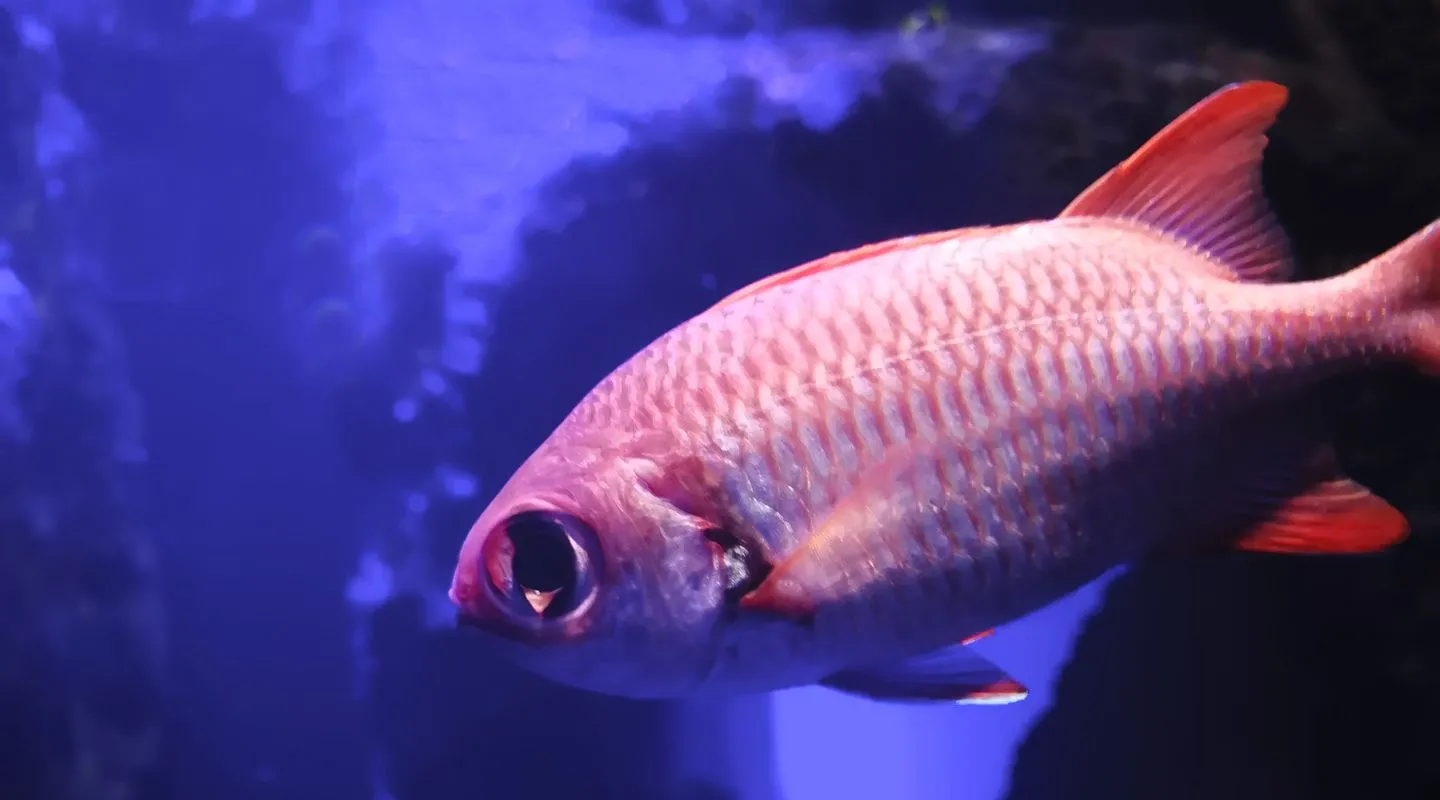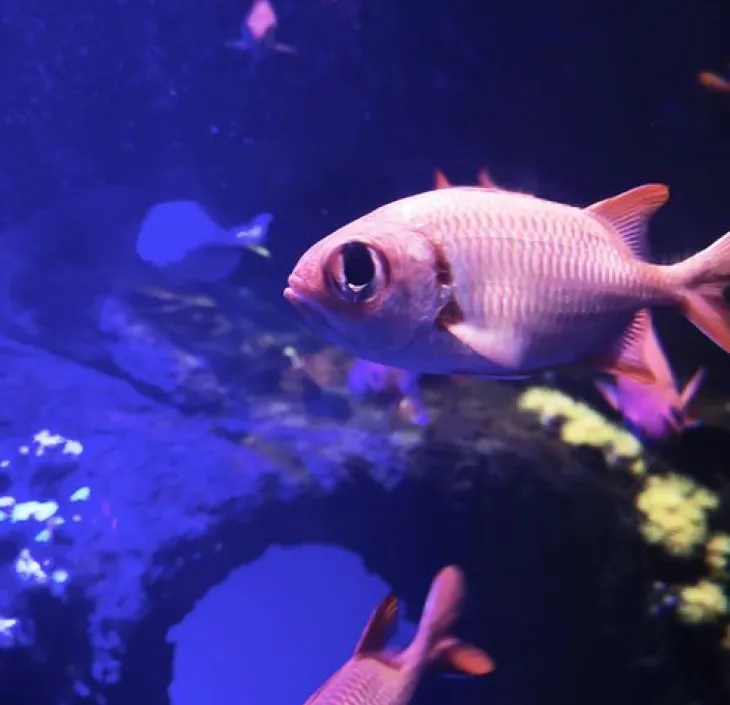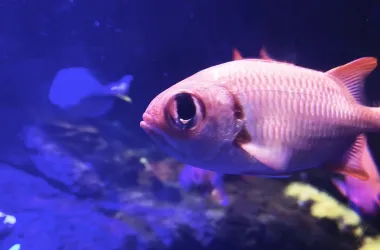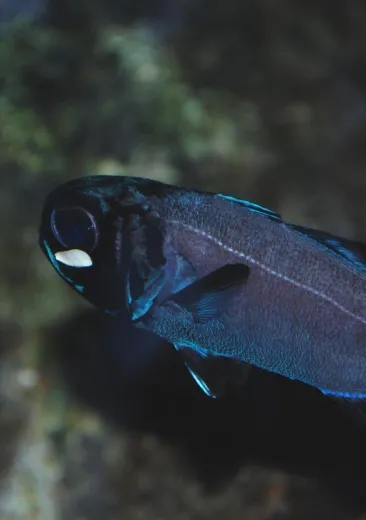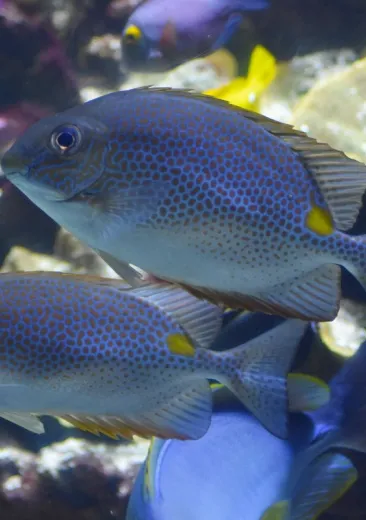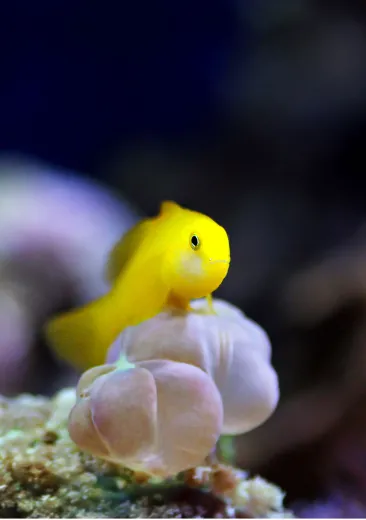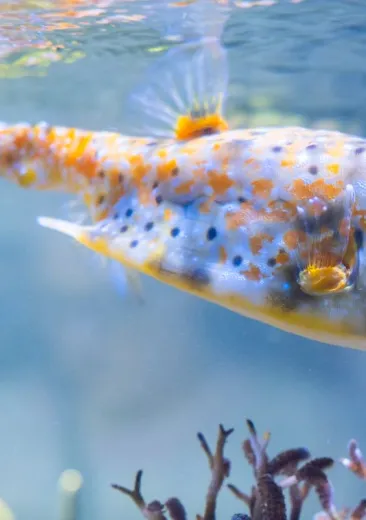In Hawaii and Johnston Atoll, sexually mature fish measure between 14.5 and 16 cm and are about 6 years old.
Peak egg laying occurs from early April to early May, with a secondary peak in September. It is carnivorous: it eats zooplankton, primarily crustacean larvae.

Identity card
Brick Soldierfish
- Scientific name:
- Myripristis amaena
- Family:
- Holocentridae
- Class:
- Actinopterygii
- Phylum:
- Chordata
- Year of description:
- Castelnau, 1873
- IUCN Status:
- Least Concern
- Distribution:
-
Pacific Ocean: Indonesia and the Philippines to the Hawaiian Islands and Ducie; north of the Ryukyu Islands.
- Habitat:
-
Tropical marine reefs, at depths of 25 to over 150 metres.
- Size:
Maximum length 26.5 cm.
- Diet:
-
Zooplankton, primarily crustacean larvae.
- Longevity:
This species lives up to at least 14 years and is late maturing and slow growing.
